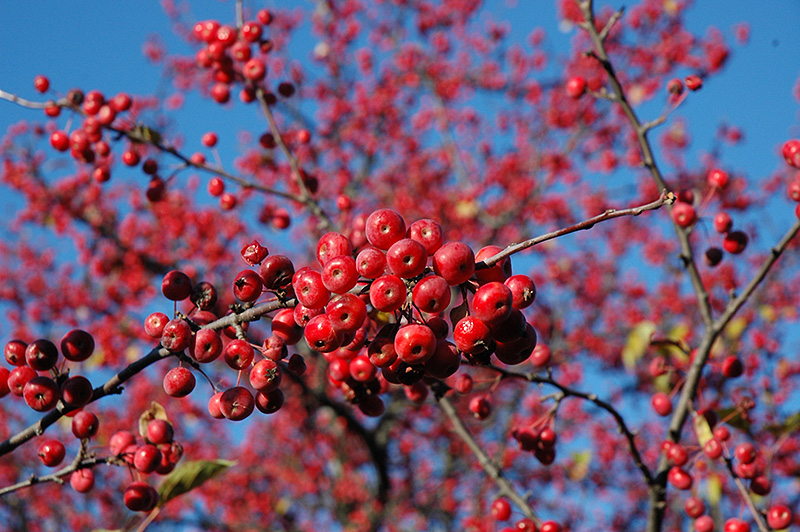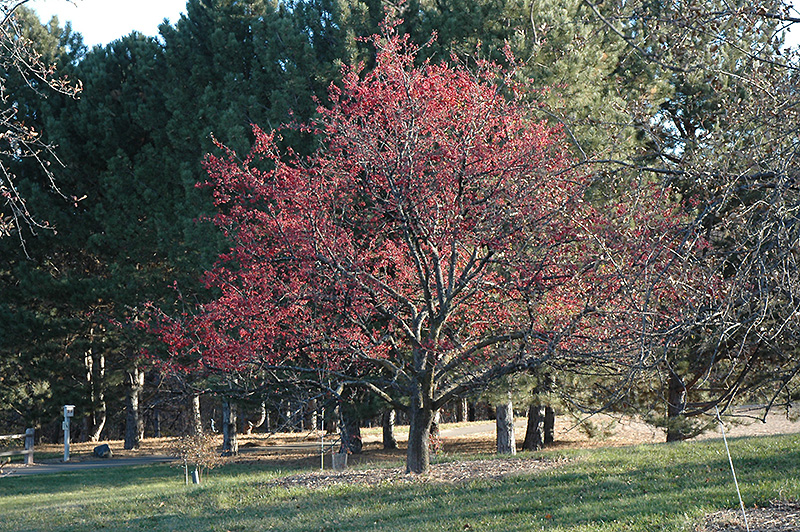Plant Finder
* This is a "special order" plant - contact store for details
Height: 25 feet
Spread: 20 feet
Sunlight:
![]()
Hardiness Zone: 2b
Other Names: Prairie Crab Apple, Crabapple
Description:
A small native tree with pretty white flowers in spring followed by yellowish-green fruit in fall; spines and deeply toothed leaves more closely resemble hawthorn; a nice tree for naturalistic plantings
Ornamental Features
Prairie Crab Apple features showy clusters of fragrant white flowers along the branches in mid spring, which emerge from distinctive pink flower buds before the leaves. The fruits are showy yellow pomes carried in abundance from early to mid fall. The fruit can be messy if allowed to drop on the lawn or walkways, and may require occasional clean-up. It has dark green deciduous foliage. The serrated pointy leaves turn yellow in fall.
Landscape Attributes
Prairie Crab Apple is a deciduous tree with a more or less rounded form. Its average texture blends into the landscape, but can be balanced by one or two finer or coarser trees or shrubs for an effective composition.
This is a high maintenance tree that will require regular care and upkeep, and is best pruned in late winter once the threat of extreme cold has passed. Gardeners should be aware of the following characteristic(s) that may warrant special consideration;
- Messy
- Disease
- Spiny
Prairie Crab Apple is recommended for the following landscape applications;
- Naturalizing And Woodland Gardens
Planting & Growing
Prairie Crab Apple will grow to be about 25 feet tall at maturity, with a spread of 20 feet. It has a low canopy with a typical clearance of 4 feet from the ground, and is suitable for planting under power lines. It grows at a fast rate, and under ideal conditions can be expected to live for 50 years or more.
This tree should only be grown in full sunlight. It is very adaptable to both dry and moist locations, and should do just fine under average home landscape conditions. It is not particular as to soil type or pH. It is highly tolerant of urban pollution and will even thrive in inner city environments. This species is native to parts of North America.
* This is a "special order" plant - contact store for details

